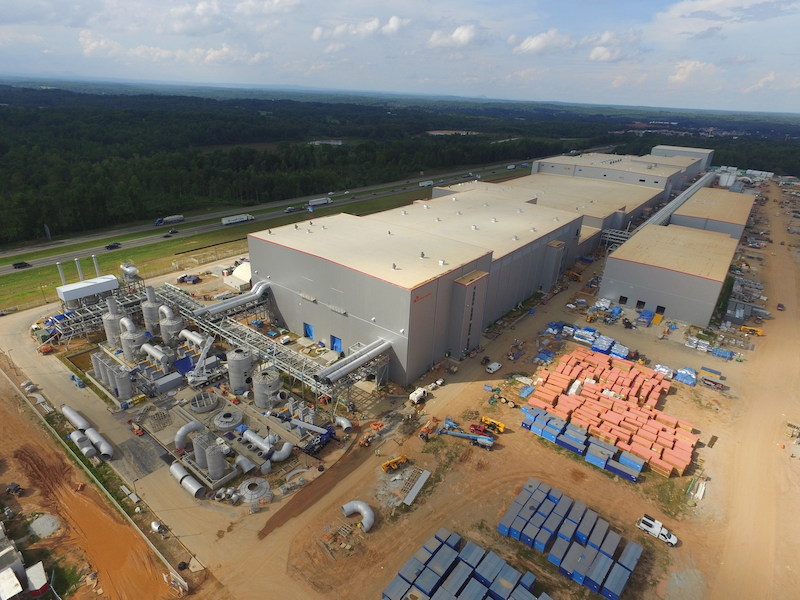For those finishers looking for an opportunity to grow their business in a new industry, AutoBeat Editor-In-Chief Gary Vasilash says the future of electric vehicle (EV) products — including battery cells — is growing enormously.
Consider this recent timeline that he put together in an AutoBeat article:
- September 2018: General Motors announces at $28-million expansion of its advanced battery test lab in Warren, Michigan, to bring the facility to a footprint of more than 100,000 square feet
- March 2019: GM announces a $300-million investment in its Orion Township, Michigan, plant to produce a new Chevrolet electric vehicle (EV), which will join the Chevrolet Bolt EV, already in production at the factory
- December 2019: GM and LG Chem announce plans to build a $2.3-billion plant in Lordstown, Ohio, to produce EV batteries. Construction started on the plant in May 2020
- January 2020: GM announces a $2.2-billion investment in its Detroit-Hamtramck assembly plant to build various all-electric trucks and SUVs. GM has developed a platform to accommodate 19 different battery and drive unit configurations that can be used for vehicles ranging from sedans to work trucks
- April 2020: GM and Honda announce the companies will jointly develop two EVs based on the GM platform and using the Ultium batteries that will be produced in the GM-LG Chem plant
 An aerial shot from earlier this year of the SK Battery America site in Commerce, Ga., shows construction progress at the facilities. SK Innovation is building two plants at the Georgia site to make batteries for electric vehicles.Vasilash says General Motors Chair and CEO Mary Barra affirmed the company’s EV plans of 30 new launches on a global basis by 2025, more than two-thirds of which will be available in North America.
An aerial shot from earlier this year of the SK Battery America site in Commerce, Ga., shows construction progress at the facilities. SK Innovation is building two plants at the Georgia site to make batteries for electric vehicles.Vasilash says General Motors Chair and CEO Mary Barra affirmed the company’s EV plans of 30 new launches on a global basis by 2025, more than two-thirds of which will be available in North America.
“This means that 40% of GM’s US vehicles will be battery-electric by the end of 2025,” says Vasilash, who has been covering the automotive industry for over 30 years and is one of the most respected writers in the industry.
“At the risk of stating the obvious: this is nearly the end of 2020. This means that the acceleration into the EV space is going to be happening at warp speed,” Vasilash says.
Barra’s reasoning for the announcement was crystal clear: “Climate change is real. And we want to be part of the solution by putting everyone in an electric vehicle.”
Lowering the Price of EV Spurs Manufacturing Growth
GM followed Barra’s pronouncement with news that a pending breakthrough in battery chemistry will cut the price of its electric vehicles, so they equal those powered by gasoline within five years. The technology also will increase the range per charge to as much as 450 miles.
An Associated Press article says GM’s product development chief promised a small electric SUV that will cost less than $30,000 and pledged to roll out 30 battery-powered models worldwide by 2025. Nearly all current electric vehicles cost more than $30,000.
The AP says the announcement shows how fast electric vehicle technology is evolving and how it may become the primary fuel for transportation sooner than almost anyone believed.
 Mike ValentiOf course, this is nothing new to the team at Hubbard-Hall, which has been working in the battery cell market for more than a decade. They partnered with a battery cell manufacturer for several large automakers to help design a cleaning process that is flexible and consistent.
Mike ValentiOf course, this is nothing new to the team at Hubbard-Hall, which has been working in the battery cell market for more than a decade. They partnered with a battery cell manufacturer for several large automakers to help design a cleaning process that is flexible and consistent.
Mike Valenti, Hubbard-Hall’s Director of Cleaning Technologies, says lithium ion batteries are the preferred technology being used in EV, although other types of batteries have begun emerging on the market, too.
“The lithium ion batteries for EV come in various configurations,” Valenti says. “There are large cell packs that act as one battery and the entire pack can be charged, but most of the cells used in EV are made up of thousands of little batteries grouped together.”
Those bundled batteries are about the size of an AA battery and are preferred because — in the case of a crash — only the damaged cans are affected, which mitigates the risk of a lot of energy being released that might cause a fire or explosion.
The smaller battery cans are made of steel and nickel. Valenti says there are two separate processes used to manufacture and finish the cartridges, based on the need: the one process forms the small steel cylinder first, then adds a plated nickel finish; the other process places a nickel clad on top of the steel cylinder, after which the battery is formed from the material.
Already Involved in the EV Industry for Years
Hubbard-Hall has been supplying cleaning chemistries for both the processes for several years, and their involvement in the EV industry has been growing steadily over the years.
“Our largest cleaning customer is making EV battery cans,” Valenti says. “We have spent a lot of time learning the EV manufacturing process so we can grow right along with the industry. We like to think we’ve been playing a very vital role in getting these batteries manufactured and ready for the industry.”
AutoBeat’s Vasilash says there is a recognition amongst carmakers that they need to not only make vehicles that are compelling but also affordable. He says one means by which they’re doing this is by scaling the production.
“GM president Mark Reuss pointed out that, when it comes to vehicles powered by internal combustion engines, there are some 550 combinations in production, and they’ve identified 19 propulsion modules,” Vasilash says. “So, by reducing complexity, they are able to create volume; with volume comes the ability to reduce costs.”
Aside from Tesla and other EV car manufacturers who are developing new technology to help reduce costs, Vasilash says GM developed what they’re calling “Ultium” batteries, which are predicated on pouch-style cells that use low-cobalt chemistry, nickel-manganese-cobalt-aluminum (NMCA).
“Not only does this chemistry help GM regarding the supply chain,” he says, “But it will help drive down the cost of batteries to below $100 kW/h.”
GM and its battery supplier LG Chem are building a $2.3-billion plant in Ohio to mass-produce batteries. Vasilash points out that Barra has hinted that GM could sell batteries to other vehicle manufacturers and ride-share companies.
Perfect Opportunity For Manufacturing And Finishing Operations
The fast growth in the EV industry is a perfect opportunity for manufacturing and finishing operations to reach out to Hubbard-Hall to learn more about the processes and chemistries involved.
Valenti says, for example, that many operations are using Hubbard-Hall’s Aquaease chemistries to clean the battery cans according to specifications. That includes setting up an aqueous cleaning system that sometimes uses a heavy-duty caustic alkaline cleaner followed by a Hubbard-Hall water-based rust preventative.
“Hubbard-Hall specifically developed a unique Aquaease application for the EV battery makers,” Valenti says. “We actually have two different types of Aquaease at some facilities because they run different processes entirely.”
The versatility of Aquaease has been embraced by many manufacturers and finishers because of its consistent performance in various scenarios. For example, Valenti says that plating nickel over the steel battery casing leaves a cleaner surface as compared to the nickel cladding process.
“There are often micro-fractures on the surface of the nickel clad, which allows for a higher tendency for corrosion,” he says. “It also generates smaller micro-smuts that have to be dealt with, too. The Aquaease for that process removes a lot of lube that those parts are saturated in, as well as the smut.”
Some EV battery makes also use a vacuum degreasing process that utilizes a solvent cleaner, which Hubbard-Hall’s also provides.
“Those facilities need a very high throughput, and the vacuum degreasing process does that for them,” Valenti says. Hubbard-Hall can supply facilities with modified alcohol used in the degreasing process through their partnership with SafeChem.
A Manufacturing Need for Some Time to Come
The EV battery sector is expected to propel manufacturing for several years. Recently, GM sold its Lordstown Assembly plant in Ohio after idling the plant in March. The 6.2 million-square-foot facility was sold to an investment group called Lordstown Motors, which is backed by electric truck maker Workhorse Group.
SK Innovation announced this fall that it plans to hire more than 1,000 skilled workers by the end of 2021 as it prepares for initial production at the first of two electric vehicle battery plants being built in Commerce, Georgia, about 70 miles northeast of Atlanta.
SK Innovation is South Korea's largest energy company, and is building the two EV battery plants at the Georgia site as part of a $2.6 billion investment in its U.S. battery business that will directly create more than 2,600 permanent jobs in the Jackson County area by 2024. The first SK Battery America plant is scheduled to begin initial operations in 2021 with mass production in 2022. A second plant at the same site is expected to begin mass production in 2023.
“There’s no question that electric vehicles are going to be a growing industry for a very long time,” Valenti says.



































